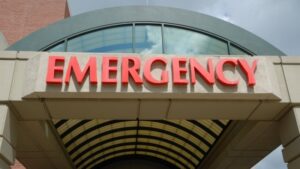2 Strategies for Developing an Emergency Preparedness Plan

Last year when Hurricanes Harvey and Irma hit, many were surprised by their sheer ferocity. Hospitals in Texas and Florida had emergency plans at the ready, but how could they anticipate the absolute chaos and devastation that would come. The bigger question is what lessons have we learned from these climatic events?
Well, hurricane season is here, and storms are already brewing in the Atlantic like an old-style coffee pot simmering threateningly before it reaches the boiling point. The sooner hospitals implement a disaster preparedness plan, the better. Why wait? The Lyndon B. Johnson General Hospital (LJGH) in northwest Texas didn’t. In the aftermath of the hurricanes last year, they made changes.
1.) Emergency Preparedness on a budget – The Lyndon B. Johnson General Hospital

Re-planning with reduced space leads to superb results
Before Hurricane Harvey, patients at LJGH had to wait until a bed became available in the Emergency Department. At this point of care, they were assessed by a nurse or physician while they remained in this treatment space.
After Hurricane Harvey hit, hospital leadership decided that these patients could be moved to a separate, low acuity part of the ED. This segregated section now formed an area where patients waited for results of testing and consultations.
Reorganizing the ED accumulatively decreased door-to-provider time, door-to-disposition time while also reducing the percentage of patients who left the ED without seeing a provider. This was despite an increased ED volume of 7.5% and decreased inpatient capacity from the damage caused by Hurricane Harvey.
A smaller ED with reduced boarding hours
LJGH was now smaller than before the hurricane hit. They also had a reduced capacity ED. Unsurprisingly, both factors impacted patient admission.
In the past, when ED volume spiked, inpatient teams stepped in to bolster staff floor numbers. Hospital leadership recognized that this strategy could no longer work. The senior management team recognized that they needed to transfer patients to other facilities with an increased ED capacity- enabling patients to receive care they needed. This helped LJGH to drive ED boarding hours down to manageable levels.
The changes made by LJGH had positive results. LJGH is now one of the busiest adult EDs in Houston with 7,430 patients per month. The number of patients that leave the hospital without being seen decreased by 29% in the quarter after Harvey. The average time patients wait to be seen by their first provider also decreased by 22%. Boarding hours dropped by 52%. Serious safety incidents also declined. Other changes included a boosted ED staff morale- higher than ever before during the hospital’s history.
2.) Learning from experience and added preparation leads to exceptional results
CHRISTUS Southeast Texas St. Elizabeth Hospital found the best way to prepare was to learn from previous hurricane incidents. They developed a well-crafted emergency preparedness plan involving educating staff, implementing new technology and establishing preventative measures to prepare for the aftermath of a storm.

After seeing the devastation caused by Hurricane Rita in 2005, the leadership at St. Elizabeth knew they needed to be better equipped. This meant increased investment in water wells and hurricane-strength protective window film, as well as, a flood mitigation system.
Connecting with State Leadership
In the days leading up to the storm, the CHRISTUS command center in Dallas conference called leaders throughout the state. Part of this hospital’s strategy was to implement a five day plan. The first course of action was flying in 100 replacement nurses and other licensed professionals from CHRISTUS hospitals based in Texas and Louisiana. Once on hospital grounds, these volunteer nurses were paired with staff members. This helped volunteers adjust to a new hospital and electronic health record system.

St. Elizabeth was well prepared to deal with another repercussion of the disaster, too: its impact on staff nurses. One in five nurses lost their home in the storm and needed emotional and financial support.
St. Elizabeth provided support through prayer circles and other spiritual programs. They also alleviated the financial burden on nurses by paying the wages of nurses who were unable to get to work during the hurricane. Other programs they put into place included the buddy system, which provides emotional support through nursing colleagues.
The Importance of Emergency Preparedness Plans
During recent times, the world has witnessed dramatic environmental events such as Hurricanes Rita, Harvey, and Irma. Both the Lyndon B. Johnson General and Southeast Texas St Elizabeth hospitals offer two unique approaches in implementing an emergency preparedness plan. LJGH put into action a plan that used their resources intelligently and efficiently within a restricted budget. By contrast, St. Elizabeth invested in newer technologies and education that benefited both their nursing staff and their patients. Both these hospitals definitely show the way forward for others in rethinking and implementing a successful emergency preparedness strategy.
By: Jonathan Gordon
